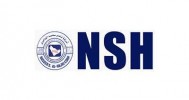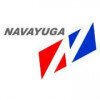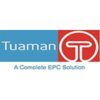
i
Hi Tech
Projects
Filter interviews by
Hi Tech Projects Interview Questions and Answers
40 Interview questions
I address NCRs by investigating the root cause, implementing corrective actions, and ensuring compliance with protocols.
Conduct a thorough investigation to identify the root cause of the NCR.
Engage relevant team members to gather insights and perspectives.
Document findings and communicate them to all stakeholders.
Implement corrective actions to prevent recurrence, such as retraining staff or updating procedures.
Mo...
Mix design is crucial for achieving desired concrete properties, ensuring durability, strength, and cost-effectiveness in construction.
Ensures optimal proportions of materials for desired strength and durability.
Helps in achieving specific workability for different construction methods.
Reduces material waste and costs by optimizing ingredient ratios.
Example: A mix design for a high-strength concrete might use a lo...
Surface cracks in slabs can arise from various factors including drying shrinkage, temperature changes, and improper curing.
Drying Shrinkage: As concrete dries, it shrinks, leading to cracks if not properly controlled.
Temperature Changes: Fluctuations in temperature can cause expansion and contraction, resulting in cracks.
Improper Curing: Insufficient curing can lead to uneven moisture loss, increasing the risk of...
Reconciliation is the process of ensuring consistency and accuracy between two sets of records or accounts.
In finance, reconciliation involves comparing bank statements with company records to identify discrepancies.
In project management, it can refer to aligning project budgets with actual expenditures.
For example, a billing engineer may reconcile invoices with payment records to ensure all charges are accounted ...
Billing involves generating invoices, tracking payments, and managing accounts receivable for services rendered.
1. Invoice Generation: Create detailed invoices based on services provided, including itemized costs.
2. Payment Tracking: Monitor incoming payments and update accounts to reflect outstanding balances.
3. Account Reconciliation: Regularly compare billing records with payment receipts to ensure accuracy.
4. ...
The basic rate in a contract refers to the standard pricing for services or goods before any adjustments or additional costs.
The basic rate serves as the foundation for pricing in contracts.
It may vary based on factors like location, service type, or duration.
For example, a construction contract might have a basic rate of $50/hour for labor.
Additional costs such as overtime, materials, or taxes are added to the ba...
Yes, I refer to rcp drawings for engineering projects.
I regularly refer to rcp drawings to understand the layout and design of the project
Rcp drawings help me visualize the piping and instrumentation details
They are crucial for coordinating with other team members and ensuring accuracy in the project
The process of construction building involves planning, designing, obtaining permits, site preparation, foundation construction, framing, roofing, finishing, and inspections.
Planning: Determine the scope, budget, and timeline of the project.
Designing: Create architectural and structural plans.
Obtaining permits: Obtain necessary approvals from local authorities.
Site preparation: Clear the land and prepare it for co...
Yes, I refer to structures drawings for design and construction purposes.
I refer to structures drawings to understand the design requirements
I use structures drawings to ensure compliance with building codes and regulations
I consult structures drawings during construction to ensure accuracy and quality of work
Examples: architectural, structural, and MEP drawings
Safety and quality in the workplace are crucial for protecting employees, maintaining productivity, and ensuring customer satisfaction.
Ensures the well-being and health of employees
Reduces the risk of accidents and injuries
Improves productivity and efficiency
Enhances customer satisfaction and loyalty
Helps maintain a positive reputation for the company
Examples: Implementing safety protocols, conducting regular qual...
Hi Tech Projects Interview Experiences
41 interviews found
I applied via Walk-in and was interviewed in Nov 2024. There were 5 interview rounds.
(2 Questions)
- Q1. Store work details
- Q2. Store inventory
(2 Questions)
- Q1. Job change reason
- Ans.
Seeking new challenges and opportunities for growth
Desire to expand skill set and knowledge in a new environment
Opportunity for career advancement and professional development
Seeking a more challenging and rewarding role
Interest in exploring different aspects of the industry
- Q2. Self growth
(2 Questions)
- Q1. Site job work ready
- Q2. Guest house facility
(2 Questions)
- Q1. Ready work 10 hours
- Q2. Good waking in hitech
(2 Questions)
- Q1. Working system is good
- Q2. Job time is good
Interview Preparation Tips
I applied via Approached by Company and was interviewed in Nov 2024. There were 2 interview rounds.
Give the employee who wants to learn a chance to do so, so that they can contribute positively to themselves and their company. Thank you.
(4 Questions)
- Q1. Provide an opportunity for employees with technical knowledge to teach others.
- Q2. Sikho aur sikhao
- Q3. Team work all employees
- Q4. Repeated employee member's
Interview Preparation Tips
- Electricals
- Mechanical Maintenance
- Computer Operating
- Tower Crane
I applied via Referral and was interviewed in Nov 2024. There were 2 interview rounds.
Two multiple-choice question papers: 1) pertaining to Civil Engineering and 2) an attitude test for logical reasoning.
(3 Questions)
- Q1. Can you describe your experiences during your internship, including what you learned and observed?
- Ans.
During my internship, I gained hands-on experience in data analysis, learned how to use various BI tools, and observed the impact of data-driven decision making.
Conducted data analysis on sales trends to identify opportunities for growth
Utilized BI tools such as Tableau and Power BI to create interactive dashboards
Observed how data-driven decisions led to improved operational efficiency
Collaborated with cross-functiona...
- Q2. What extracurricular activities did you participate in during school and college?
- Ans.
I participated in various extracurricular activities such as debate club, volunteering, and sports teams.
Member of debate club in high school
Volunteered at local animal shelter during college breaks
Played on the varsity soccer team in college
- Q3. What types of projects have you completed during your time at university?
- Ans.
I have completed various projects during my time at university, including data analysis, market research, and business strategy projects.
Data analysis project analyzing customer behavior and sales trends
Market research project studying consumer preferences and competitor analysis
Business strategy project developing a new product launch plan
Interview Preparation Tips
- Business intelligent
- System Design
- Excel
- No code application
- Supply Chain
(5 Questions)
- Q1. Minium diameter of bar used in column
- Ans.
Minimum diameter of bar used in column is determined by structural requirements and load calculations.
Minimum diameter is typically specified in the structural design drawings or calculations
Factors such as column height, load capacity, and seismic considerations influence the minimum bar diameter
Common minimum diameters for column bars range from 12mm to 25mm depending on the structural requirements
- Q2. Minium grade of concrete used in column
- Ans.
Minimum grade of concrete used in column is typically M20.
Minimum grade of concrete used in column is usually M20
Higher grades like M25, M30, M35, etc. can also be used for columns based on structural requirements
The grade of concrete is determined based on the strength required for the structure
- Q3. Minium thickness of slab
- Ans.
Minimum thickness of slab is determined based on factors like load, span, and material used.
Minimum thickness of slab is typically determined by structural engineers based on the expected loads and span of the slab.
Factors such as the material used for the slab and any additional reinforcement also play a role in determining the minimum thickness.
For example, a residential slab may have a minimum thickness of 4 inches,...
- Q4. What is water cement ratio
- Q5. Density of steel
- Ans.
The density of steel is approximately 7.85 g/cm^3.
The density of steel is commonly expressed in grams per cubic centimeter (g/cm^3).
The density of steel can vary slightly depending on the specific alloy and composition.
For example, the density of stainless steel is around 7.9 g/cm^3, while carbon steel is around 7.85 g/cm^3.
Interview Preparation Tips
Objective*
To assess communication skills, problem-solving abilities, and teamwork.
*Instructions*
1. Each participant will introduce themselves briefly.
2. The moderator will introduce the topic and provide context.
3. Participants will discuss the topic, sharing their thoughts and opinions.
4. The discussion will be timed, and participants are expected to contribute meaningfully.
Evaluation Criteria
1. *Communication skills*: Clarity, articulation, and effectiveness in conveying ideas.
2. *Problem-solving skills*: Ability to analyze challenges and provide innovative solutions.
3. *Teamwork*: Collaboration, active listening, and respect for others' opinions.
4. *Leadership*: Ability to guide the discussion, summarize key points, and drive consensus.
Tips for Success
1. *Be prepared*: Research the topic, organize your thoughts, and practice articulating your opinions.
2. *Listen actively*: Pay attention to others, respond thoughtfully, and build on their ideas.
3. *Be respectful*: Maintain a professional tone, avoid interrupting, and show appreciation for diverse perspectives.
4. *Take initiative*: Don't hesitate to contribute, and be willing to lead the discussion if needed.
By following these guidelines and tips, you'll be well-prepared to participate in a successful and engaging Group Discussion!
I applied via Company Website and was interviewed in Nov 2024. There were 2 interview rounds.
(3 Questions)
- Q1. Do you refer structures drawings
- Ans.
Yes, I refer to structures drawings for design and construction purposes.
I refer to structures drawings to understand the design requirements
I use structures drawings to ensure compliance with building codes and regulations
I consult structures drawings during construction to ensure accuracy and quality of work
Examples: architectural, structural, and MEP drawings
- Q2. Do you refer rcp drawings
- Ans.
Yes, I refer to rcp drawings for engineering projects.
I regularly refer to rcp drawings to understand the layout and design of the project
Rcp drawings help me visualize the piping and instrumentation details
They are crucial for coordinating with other team members and ensuring accuracy in the project
- Q3. What are the process of construction building
- Ans.
The process of construction building involves planning, designing, obtaining permits, site preparation, foundation construction, framing, roofing, finishing, and inspections.
Planning: Determine the scope, budget, and timeline of the project.
Designing: Create architectural and structural plans.
Obtaining permits: Obtain necessary approvals from local authorities.
Site preparation: Clear the land and prepare it for constru...
(1 Question)
- Q1. How long will you work with organisation’s
- Ans.
I plan to work with the organization for the long term, as I am committed to growing and contributing to its success.
I am looking for a stable and fulfilling career with opportunities for growth and development within the organization.
I believe in building strong relationships with colleagues and stakeholders over time.
I am committed to continuously improving my skills and knowledge to add value to the organization.
I a...
Interview Preparation Tips
Friendly culture
I applied via Walk-in and was interviewed in Nov 2024. There were 3 interview rounds.
MCQ based Civil engineering related questions
(1 Question)
- Q1. All civil engineering related basic questions and also field related
(1 Question)
- Q1. Basic information questions
I appeared for an interview in May 2025, where I was asked the following questions.
- Q1. What is Reconciliation?
- Ans.
Reconciliation is the process of ensuring consistency and accuracy between two sets of records or accounts.
In finance, reconciliation involves comparing bank statements with company records to identify discrepancies.
In project management, it can refer to aligning project budgets with actual expenditures.
For example, a billing engineer may reconcile invoices with payment records to ensure all charges are accounted for.
R...
- Q2. What is basic rate in contract?
- Ans.
The basic rate in a contract refers to the standard pricing for services or goods before any adjustments or additional costs.
The basic rate serves as the foundation for pricing in contracts.
It may vary based on factors like location, service type, or duration.
For example, a construction contract might have a basic rate of $50/hour for labor.
Additional costs such as overtime, materials, or taxes are added to the basic r...
- Q3. Process of billing?
- Ans.
Billing involves generating invoices, tracking payments, and managing accounts receivable for services rendered.
1. Invoice Generation: Create detailed invoices based on services provided, including itemized costs.
2. Payment Tracking: Monitor incoming payments and update accounts to reflect outstanding balances.
3. Account Reconciliation: Regularly compare billing records with payment receipts to ensure accuracy.
4. Follo...
- Q4. Assignment BBS find out
- Q5. Years of High rise experience you have?
- Ans.
I have over 5 years of experience in high-rise construction, focusing on planning and billing processes.
Managed the planning phase for a 30-story residential tower, ensuring timely completion of milestones.
Coordinated with subcontractors to streamline billing processes, reducing discrepancies by 20%.
Utilized software tools like Primavera P6 for scheduling and budget tracking on high-rise projects.
Conducted regular site...
- Q6. Personal information etc
Interview Preparation Tips
(2 Questions)
- Q1. Safety Fundamental
- Q2. Hira,Jsa
(2 Questions)
- Q1. Documents regarding
- Q2. Salary slip
Interview Preparation Tips
(2 Questions)
- Q1. What is your experience?
- Ans.
I have 5 years of experience operating Tm machines in a manufacturing setting.
Operated Tm machines for 5 years
Experience in a manufacturing setting
Knowledge of machine maintenance and troubleshooting
Trained new operators on machine operation
- Q2. What are your qualifications?
- Ans.
I have a Bachelor's degree in Computer Science and 5 years of experience operating Tm machines.
Bachelor's degree in Computer Science
5 years of experience operating Tm machines
Interview Preparation Tips
Top trending discussions






Hi Tech Projects Interview FAQs
Some of the top questions asked at the Hi Tech Projects interview -
The duration of Hi Tech Projects interview process can vary, but typically it takes about less than 2 weeks to complete.
Tell us how to improve this page.
Hi Tech Projects Interviews By Designations
- Hi Tech Projects Safety Supervisor Interview Questions
- Hi Tech Projects Civil Supervisor Interview Questions
- Hi Tech Projects Junior Engineer Interview Questions
- Hi Tech Projects Planning & Billing Engineer Interview Questions
- Hi Tech Projects Senior Electrician Interview Questions
- Hi Tech Projects Assistant Engineer Interview Questions
- Hi Tech Projects Project Manager Interview Questions
- Hi Tech Projects Senior Engineer Interview Questions
- Show more
Interview Questions for Popular Designations
Overall Interview Experience Rating
based on 77 interview experiences
Difficulty level
Duration
Interview Questions from Similar Companies
Hi Tech Projects Reviews and Ratings
based on 325 reviews
Rating in categories
|
Planning & Billing Engineer
34
salaries
| ₹3.6 L/yr - ₹7.3 L/yr |
|
Safety Officer
22
salaries
| ₹2 L/yr - ₹5.4 L/yr |
|
Junior Engineer Civil
19
salaries
| ₹1.9 L/yr - ₹4.5 L/yr |
|
Assistant Engineer
16
salaries
| ₹2.5 L/yr - ₹7 L/yr |
|
Junior Engineer
15
salaries
| ₹2.5 L/yr - ₹4.5 L/yr |

Nasser S. Al Hajri Corporation

Navayuga Engineering Company

B.L. Kashyap & Sons

L & W Constructions
- Home >
- Interviews >
- Hi Tech Projects Interview Questions












